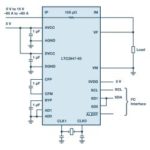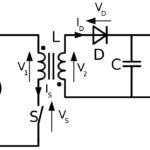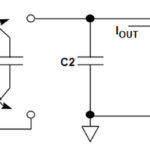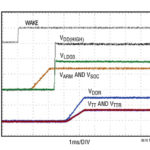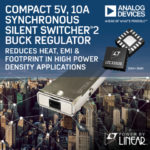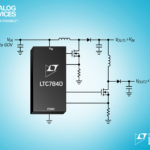New standards for combined 48-V/12-V vehicles dictate stringent tests for overvoltages and currents that new converter ICs can help meet. Tony Armstrong | Analog Devices Inc. The 48/12-V automotive battery system is just around the corner. Most major automobile manufacturers have been perfecting such systems for past few years, and it is evident that their […]
analogdevicesinc
Power/energy monitor includes sense resistor to handle ±65 A
The LTC2947-65 is a high precision power and energy monitor with an internal sense resistor supporting up to ±65 A. Three internal No Latency ΔΣ ADCs ensure accurate measurement of voltage and current, while high bandwidth analog multiplication of voltage and current provides accurate power measurement in a wide range of applications. Internal or external […]
Flyback power converters, Part 1: basic principles
Among the many available topologies used for power-supply converters, the flyback design offers some distinct advantages along with unique idiosyncrasies. There’s a wide and diverse array of power-supply converter topologies among which to choose, each with tradeoffs in their various performance attributes and cost. The flyback design is a converter approach that has been used […]
Working with higher voltages, Part 1: Voltage boosters
Whether for efficiency or due to the device physics, many applications require voltages ranging in the tens, hundreds, or even thousands of volts; the circuits which produce these voltages start with basic charge pumps and extend to voltage multipliers with simple schematics but many subtleties. Lower-voltage circuitry is the trend, with ICs and designs operating […]
Power Management ICs, part 2: PMIC implementations
The power management IC (PMIC) is often a vital part of the lower-voltage DC subsystem, as circuits have multiple power rails with tight individual specifications as well as mandated relationships among them. Part 1 of this FAQ discussed the need for, PMICs and their general characteristics. Part 2 now looks at specific ICs which implement […]
Power Management ICs, part 1: PMIC functions
The power management IC (PMIC) is often a vital part of the lower-voltage DC subsystem, as circuits have multiple power rails with tight individual specifications as well as mandated relationships among them. It’s one thing to develop needed low-voltage DC rails via DC/DC converters or regulators, but there’s also a need to manage these power […]
Step-down regulator module targets data center apps with on-board memory
Analog Devices, Inc. (ADI) expanded its suite of Power by Linear µModule regulators with the LTM4700 step-down DC/DC power regulator, which combines the highest power in its class with the energy efficient performance needed to reduce data center infrastructure cooling requirements. Configured as dual 50A or single 100A configuration, the new power µModule’s innovative package technology enables an increasing […]
Compact synchronous silent switcher provides 5 V, 10 A
Analog Devices announces the Power by Linear LTC3310S, a 5V, 10A low EMI monolithic synchronous buck converter. The device’s fixed frequency peak current mode architecture is ideal for high step-down ratio applications that demand fast transient response. The LTC3310S uses the Silent Switcher 2 architecture with integrated hot loop bypass capacitors to deliver a highly efficient, small footprint […]
Nonsynchronous boost controller that drives two MOSFET stages
Analog Devices announces the Power by Linear LTC7840, a 2-phase nonsynchronous boost controller that drives two stages of external N-channel power MOSFETs. It is configurable as single or dual output boost regulator or for higher voltages, the output of the first channel can feed the input of second channel allowing an output voltage which exceeds several […]
FAQ: Piezoelectric motors, Part 2: drive circuits
Unlike better-known electromagnetic motors, the widely used piezoelectric-based motor/actuator provides precise, repeatable linear motion over short distances, and requires a voltage drive rather than a current drive. Part 1 of this FAQ looked at the moving piezoelectric element of the actuator. Part 2 looks at their drive requirements, which are very different than those of […]


